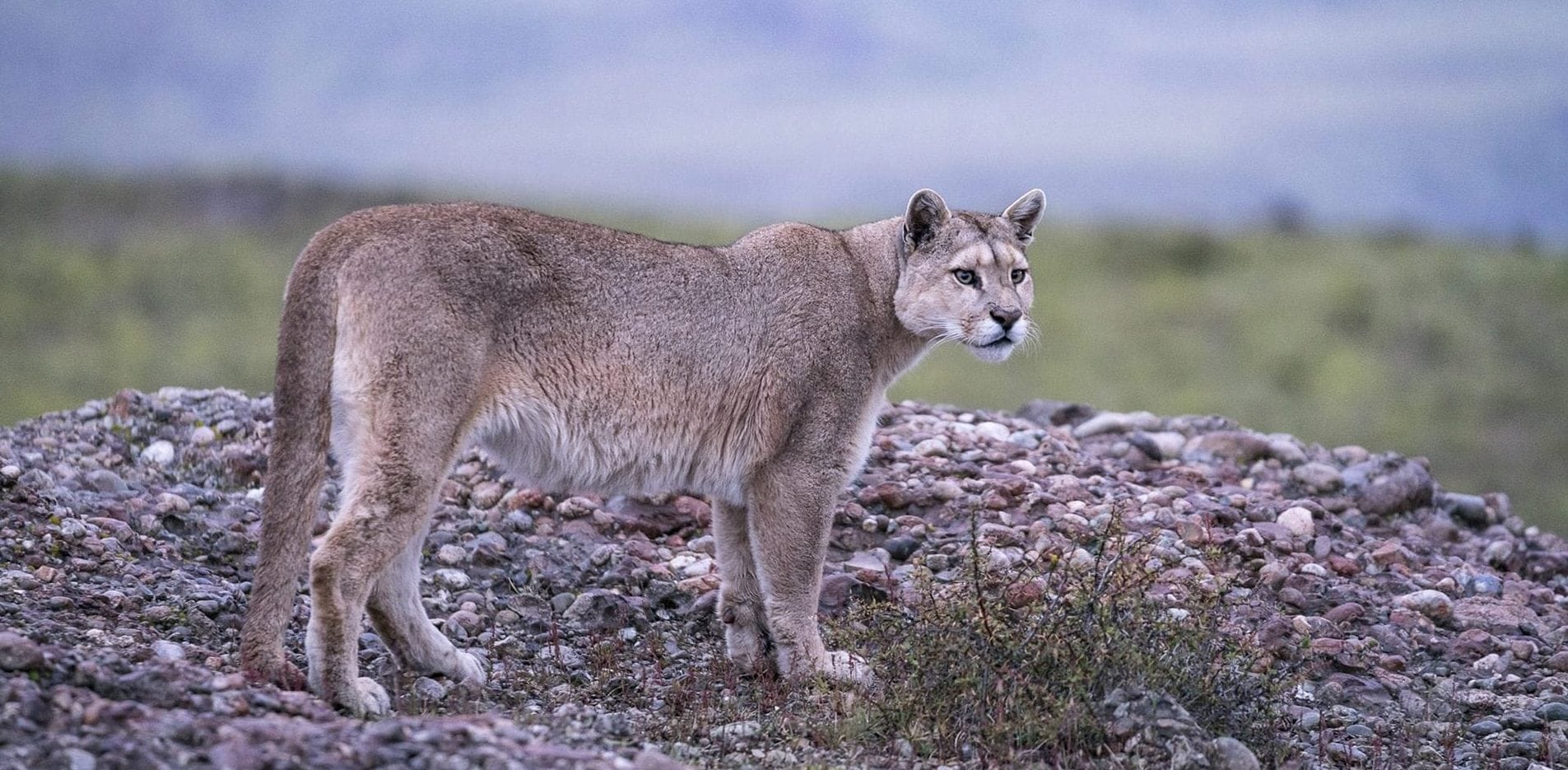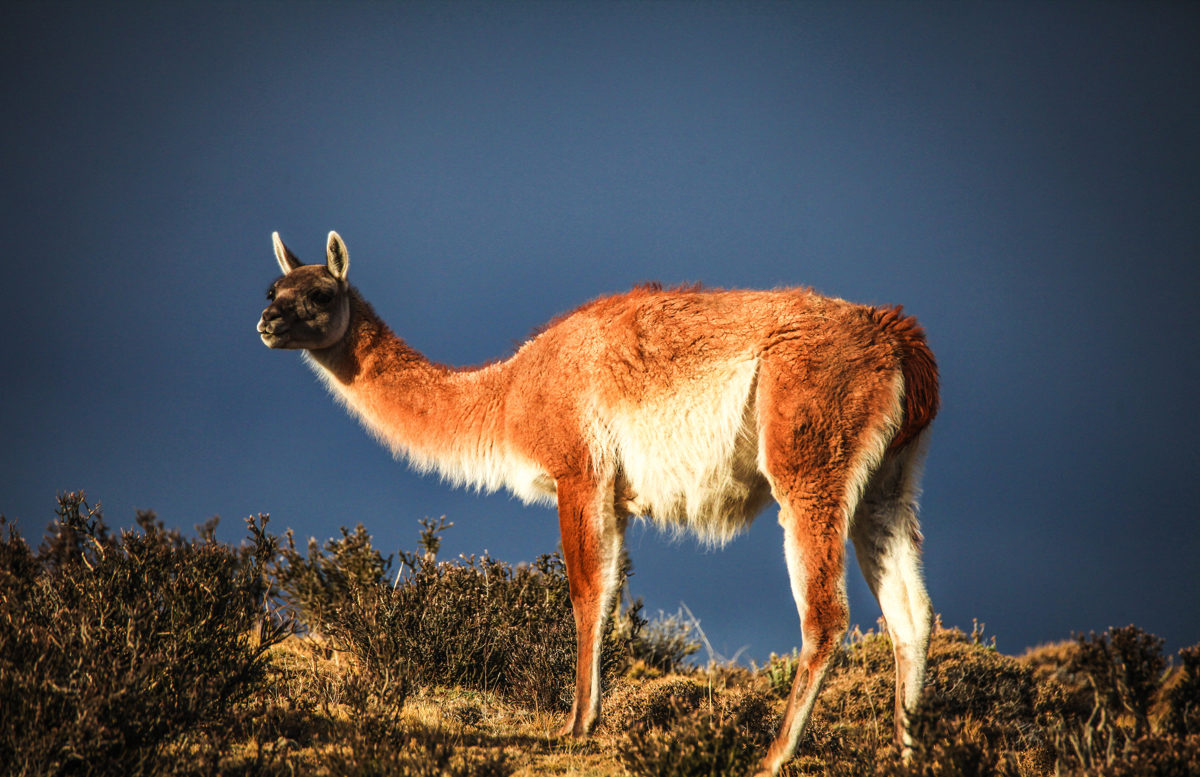 |
|
While the COVID-19 pandemic is still far from over, many countries around the world have tackled it successfully enough to start reopening their borders and attractions to visitors, with health and safety measures set in place. Many people are eager to get out and explore the world once again but want to do so safely, making visiting off-the-beaten-track, remote, and lesser-known locations where there will be fewer crowds a top priority for travelers.
Luckily, Chile is absolutely full of such destinations. Our skinny country has far more to offer besides just Patagonia and the Atacama Desert, so if you’re looking to travel to Chile once it’s safe to do so, we invite you to discover one of its hidden gems. From remote valleys to secret hideaways, many of Chile’s finest natural treasures are overlooked by visitors, which is their loss but your gain. Here are eight of our favorite off-the-beaten-track destinations around Chile that you can visit once travel restrictions are lifted.
|
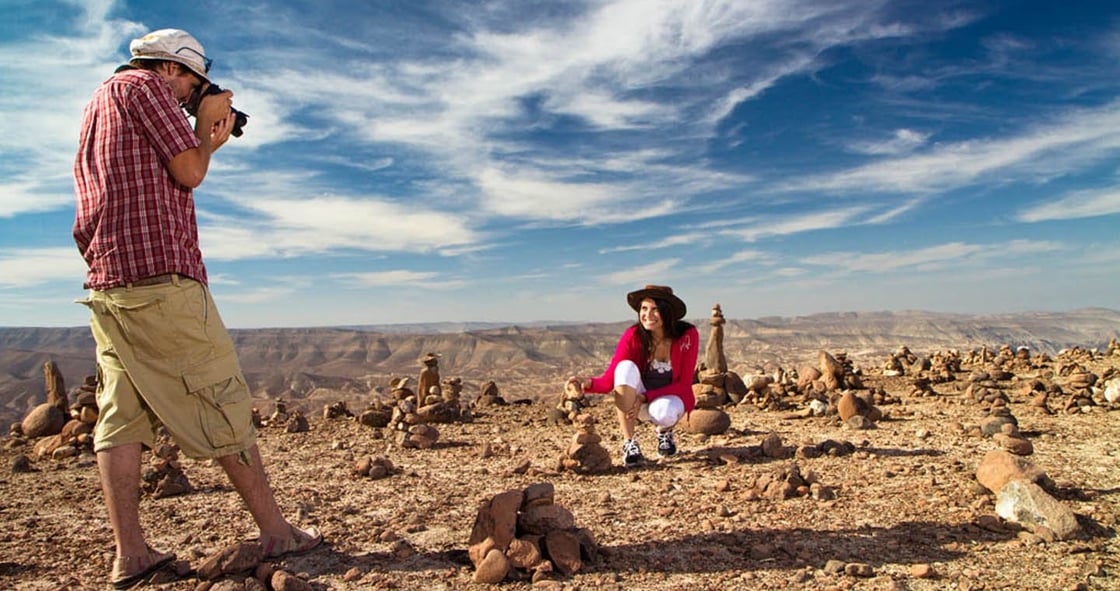 |
Codpa ValleyLocated in the far north of Chile near the city of Arica, Codpa Valley is an ancient oasis hidden amongst the rocky desert hills of the northern Atacama. Despite its arid environment, the valley is extremely fertile and lush, full of fruit trees, desert trees, and other greenery that are fed by a pristine river. The valley gets its name from the small village of Codpa, which was founded by Spanish colonizers and is home to a famous church that was built in the late 1600s and is one of the oldest churches in the country.
Today, the valley is best known for its agricultural output (producing fruits like guava and mango), its importance in the early days of Chile’s colonization, its indigenous history and culture, and the production of pintatani wine, a sweet red wine that is still made in the same way the Spanish settlers once did. Codpa is rarely on tourists’ radar but for those willing to take a chance, you’ll discover a timeless culture and way of life that has endured for generations, preserved by the heat and desert sands. There are hotels and accommodations throughout the valley, and visitors can spend their days visiting historic villages, learning about the agricultural products of the region, immersing themselves in the history and making of pintatani wine, and discovering native culture at pre-Hispanic sites like the Ofriaga petroglyphs. |
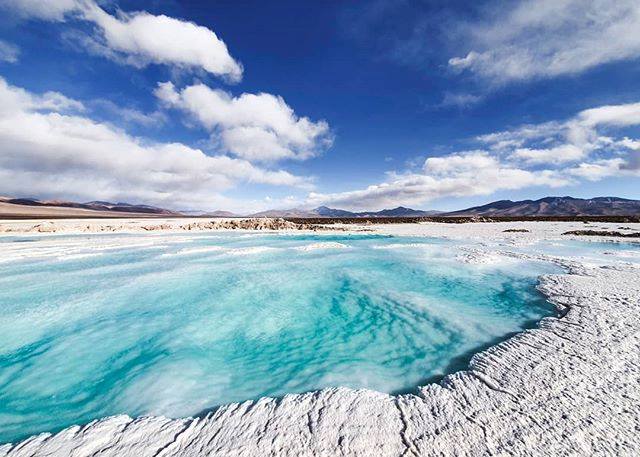 |
Salar de MaricungaWhile most visitors to the Atacama Desert stick to the main landmarks and attractions near the town of San Pedro de Atacama, this high-altitude desert has many more beautiful, remote places worth exploring. One of these is the Salar de Maricunga, a vast salt flat located in Nevado Tres Cruces National Park. Stretching 8,300 hectares, the stark-white salt flats dazzle the eyes, and the surrounding landscapes are also dotted with lakes and lagoons in vibrant shades of blue. On the horizon, you can see Ojos del Salado, Chile’s highest peak and the highest active volcano in the world, as well as the other mountains of the Nevado Tres Cruces volcanic massif. The park is also an excellent place to see migratory flamingos during the summer months. Far from the tourist crowds of San Pedro, here you can enjoy Chile’s altiplano away from the noise of humanity, with no sounds but the high-altitude winds and the occasional squawk of a flamingo. |
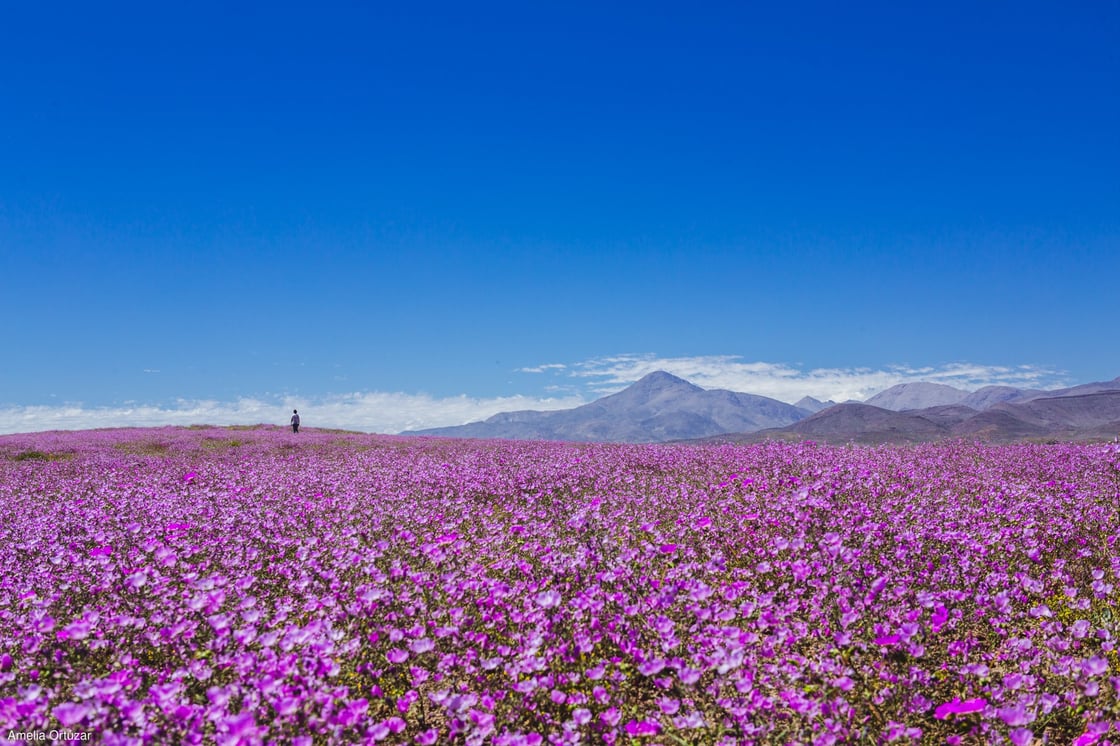 |
Llanos de Challe National ParkYou may think the Atacama is stark and lifeless, largely devoid of plants and animals. It’s why the landscapes are so often compared to Mars or the Moon. But not so. Head from the interior of the desert to the Pacific Coast and it’s a whole other world, as you’ll discover at Llanos de Challe National Park.
Here, the coastal hills receive frequent moisture coming in off the Pacific in the form of dense cloudbanks and fogs; locally, they’re called Camanchacas. These mists allow plant life to flourish, giving this national park its own unique ecosystem and incredible biodiversity full of endemic and rare plant life including flowers and cacti. If you’re lucky and visit when the El Niño–Southern Oscillation takes place, you can even witness the famous flowering desert phenomenon, where the blank desert fields spring to life with vibrant flowers and plants. It’s also one of the best places outside Patagonia to see guanacos thanks to a large native population. |
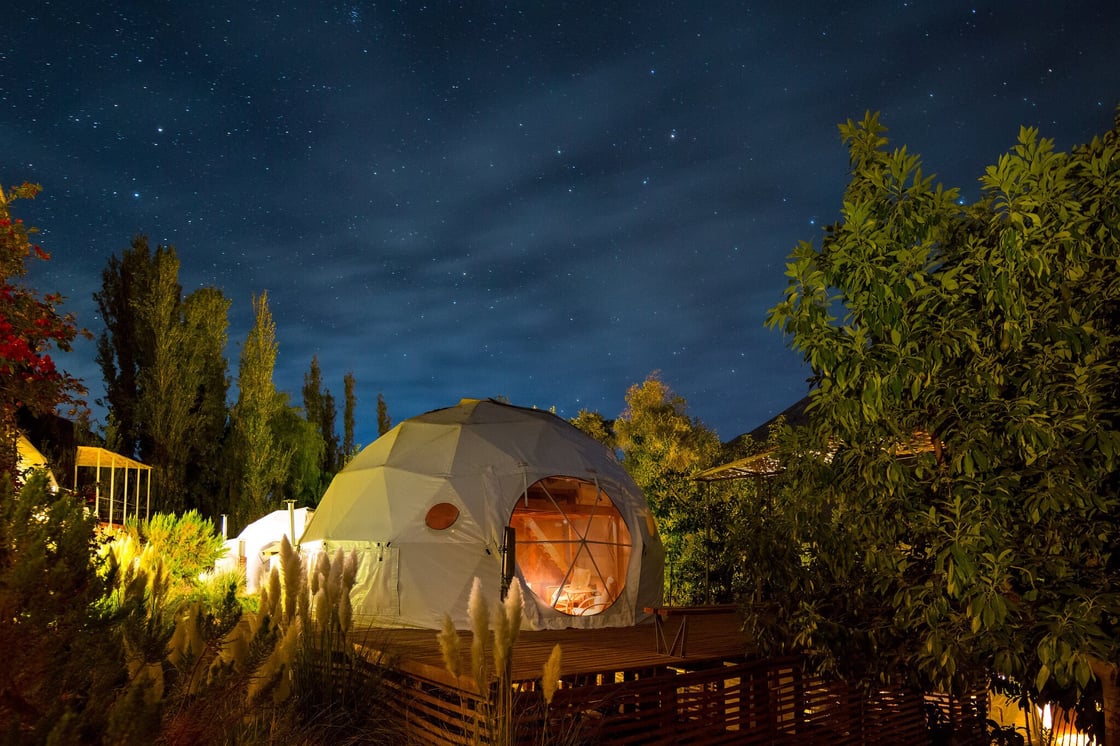 |
Elqui ValleyAlthough it’s not one of Chile’s Greatest Hits attractions like the Atacama or Patagonia, the name “Elqui Valley” may ring a bell to you; that’s because, in 2019, a total solar eclipse passed over this area and for a few brief minutes the eyes of the world were on Elqui. But this network of mystical valleys in Chile’s Norte Chico, a region between the arid Atacama and the lush central valleys near Santiago, deserves more than a passing glance. First off, it’s the birthplace of Chilean pisco: a grape-based brandy that is the country’s national drink. The valley floors are crisscrossed with patchwork vineyards, and many pisco distilleries open their doors for tastings and tours so you can learn all about this unique spirit. Immerse yourself in Chilean culture by discovering the life of one of Chile’s Nobel Prize-winning poets, Gabriela Mistral, who was born here, and outdoor lovers will also enjoy going on hikes or horseback rides throughout the hills or biking down the winding roads.
The altitude and clear-skies also make for incredible stargazing, arguably even better than in the Atacama. The hilltops here are dotted with professional and public observatories, with tours and stargazing sessions that will absolutely blow your mind. This closeness to the skies is believed to have imbued the region with a special cosmic energy; with extraordinarily high electromagnetic readings, people here feel like they have a direct connection to the universe, making it a hotbed of alternative beliefs and hippie communes. So if you need to have your chakras realigned want to reconnect with the universe, this is the place to do it. |
 |
Altos de LircayFrom dense forests and snowcapped peaks to fields of hexagonal stones believed to be UFO landing sites (yes, really), the Altos de Lircay National Reserve is truly an out-of-this-world destination. Located in the Maule region, this reserve is often bypassed by visitors heading to the more famous Radal Siete Tazas National Park nearby.
The park has many hiking trails, either for day trips or longer, multi-day treks, and its isolated nature makes it perfect for backcountry camping and hiking. The trails pass through the park’s abundant woodlands, with many ending at mountaintop viewpoints that offer spectacular vistas. One of the most popular trails leads to an area called El Enladrillado, a tabletop plateau of flat, hexagonally-shaped stones. The bizarre nature of the landscape has led some to believe UFOs land here, making it a popular spot for “believers” to visit. But even if you don’t believe in extraterrestrial life, the amazing views and otherworldly rocks are worth the hike. In addition to hiking and camping, there are also horseback riding trails as well. |
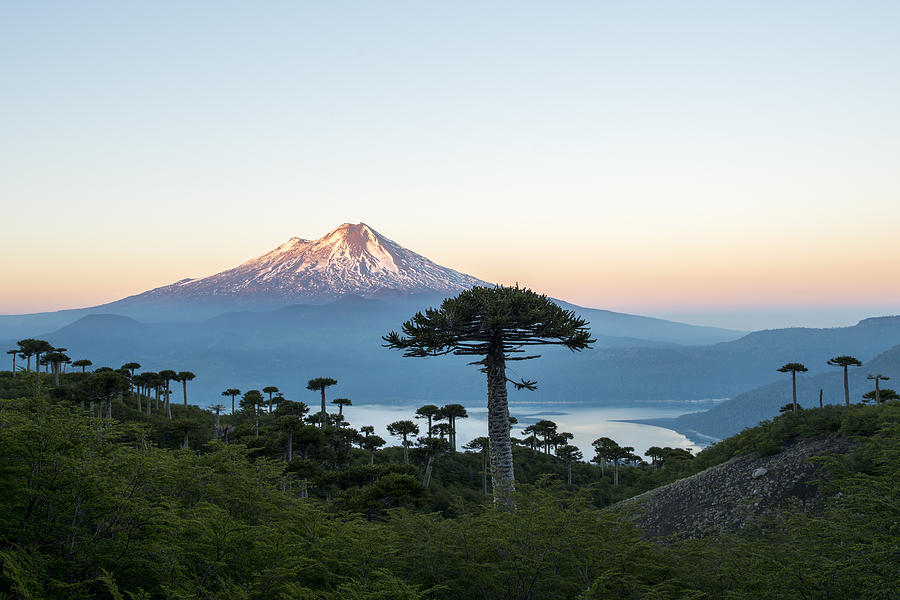 |
Conguillio National ParkThis dramatic national park, located in the Araucania region of central Chile, is often overlooked by travelers because it’s not in the more popular adjacent Lakes District or down in Patagonia. But that’s their loss, because it’s easily one of Chile’s finest hidden gems, not only because there are fewer crowds so you can better connect with nature, but because the scenery is unreal. Dominated by the mighty (and still active) Llaima Volcano, this landscape is prehistoric: full of stark black lava flows, Technicolor lakes, and ancient forests. The main distinguishing feature of the park are the forests of Araucaria trees; towering giants that can live for thousands of years and are characterized by their bare trunks and curving crown of spiny branches. There is one Araucaria located in the park, the Mother Araucaria, that is over 1,800 years old! There are several small towns with cabins and hotels on the parks’ outskirts, but many choose to stay in the park, camping or in cabins, for more direct access to the park’s many hiking trails and outdoor recreational activities like kayaking on Lake Conguillio. You can also see amazing local wildlife like woodpeckers, condors, and foxes. |
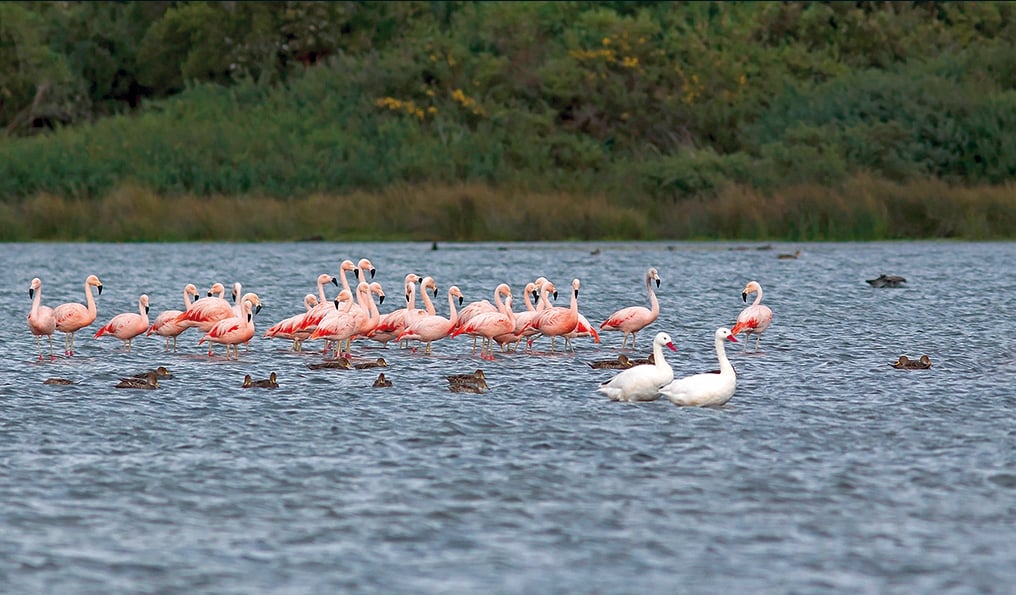 |
Carelmapu and Humedal de MaullínThis massive ecosystem of wetlands, swamps, tidal bays, rivers, estuaries, marshes, and flats covers 1,350 hectares in southern Chile, serving as protected lands for the incredible variety of birds that reside in or migrate through the area. At least 28 species of birds use these abundant wetlands as a resting place along their migratory path, and studies have found nearly a hundred different kinds of birds use the area overall. This makes this a fantastic place for birdwatching and to learn more about Chile’s fascinating flora and fauna. Throughout the protected reserve, there are designated areas for kayaking and boating, as well as hiking paths, cycling trails, and viewpoints from which to take in the views and wildlife.
To best experience the Maullín wetlands, stay in one of the nearby towns like Carelmapu. This charming village sits on the edge of a peninsula that juts out into the ocean, surrounded by dramatic scenery like seaside cliffs and lush fields and forests. Truly, the vibrantly-green landscapes look like something from coastal Ireland or England, and Carelmapu even means “green place” in Mapudungun, the language of the native Mapuche tribe. The town dates from early colonial days when it was a fort, so there are some interesting historic buildings to visit that showcase local architecture, like the Church of Carelmapu that is built in the same style as the famous Chiloe Island churches. |
 |
Patagonia National ParkThis 752,503-acre national park is one of the newest additions to Chile’s many protected lands, having been part of the major land donation gifted to the Chilean government for conservation by Doug and Kris Tompkins. But Patagonia National Park, which is located in the southerly Aysen region, was one of the Tompkins’ pet projects for rewilding and rehabilitation, removing farm infrastructure to entice native species like guanacos and pumas back. Today, the park is thriving, full of wildlife and spectacular scenery like rolling grasslands, dramatic rivers, turquoise lakes, endemic forests, craggy mountains, and more. As the park is still relatively new, visitor numbers are still low, so you can be among the first in the world to fully appreciate its beauty and tranquility, as well as contribute to its legacy of preserving Chile’s natural places for the future. There are many different hiking trails throughout the different sectors of the park to enjoy, as well as other attractions like visiting the confluence of the Chacabuco and Baker River or going for scenic drives. The park is also home to the Lodge at Valle Chacabuco, a spectacular wilderness lodge in the style of the historic hotels of US national parks, as well as campsites. |
|
|

